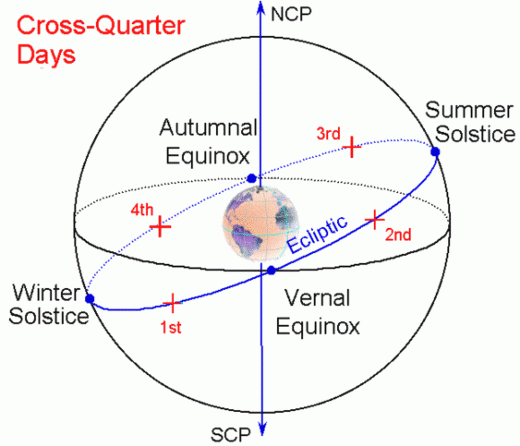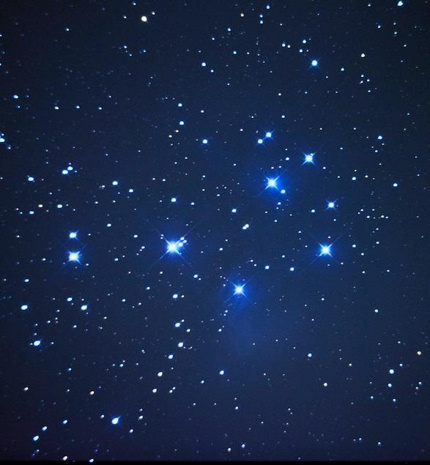
In other words, in traditional astronomy, there are eight major seasonal subdivisions of every year. They include the March and September equinoxes, the June and December solstices, and the intervening four cross-quarter days.
In modern times, the four cross-quarter days are often called Groundhog Day (February 2), May Day (May 1), Lammas (August 1) and Halloween (October 31).
Halloween is the spookiest of the cross quarter days, possibly because it comes at a time of year when the days are growing shorter. On Halloween, it's said that the spirits of the dead wander from sunset until midnight. After midnight - on November 1, which we now call All Saints' Day - the ghosts are said to go back to rest.
Comment: To learn how Halloween and All Saints' Day has come to be associated with the themes of easy traversal of the border between life and death, read Laura Knight Jadczyk's article: Witches, Comets and Planetary Cataclysms
The October 31 date for Halloween has been fixed by tradition. The true cross-quarter day falls on November 7, representing a discrepancy of about one week. According to the ancient Celts, a cross-quarter day marks the beginning - not the middle - of a season.
The Pleiades connection. It's thought that the early forbearer of Halloween - Samhain - happened on the night that the Pleiades star cluster culminated at midnight.
In other words, the Pleiades climbed to its highest point in the sky at midnight on or near the same date as this cross-quarter day. In our day, Halloween is fixed on October 31, though the midnight culmination of the Pleiades cluster now occurs on November 21.

At that time, when the Julian calendar was in use, the cross-quarter day and the midnight culmination of the Pleiades fell - amazingly enough - on or near October 31. But, then, the Julian calendar was about one week out of step with the seasons. Had the Gregorian calendar been in use back then, the date of the cross-quarter day celebration would have been November 7.
Calendar converter
But Halloween is now fixed on October 31. Meanwhile, the true cross-quarter day now falls on or near November 7 and the midnight culmination of the Pleiades cluster on or near November 21.
Bottom line: The present date for Halloween - October 31 - marks the approximate midway point between the autumn equinox and the winter solstice. Halloween is one of the year's four cross-quarter days. It is the modern-day descendant from Samhain, a festival of the ancient Celts and Druids. The Pleiades star cluster also plays a role in this story, because Samhain was said to happen on the night that the Pleiades star cluster culminated - or reached its highest point in the sky - at midnight.



Reader Comments
to our Newsletter